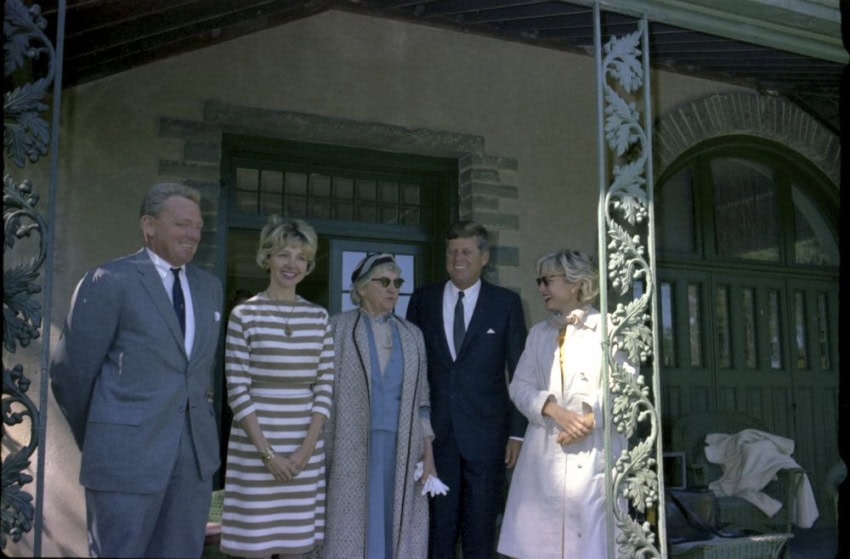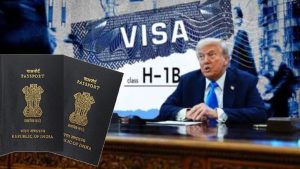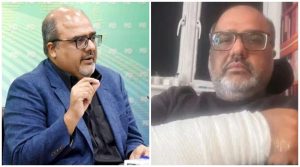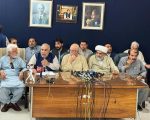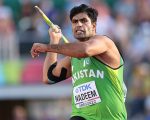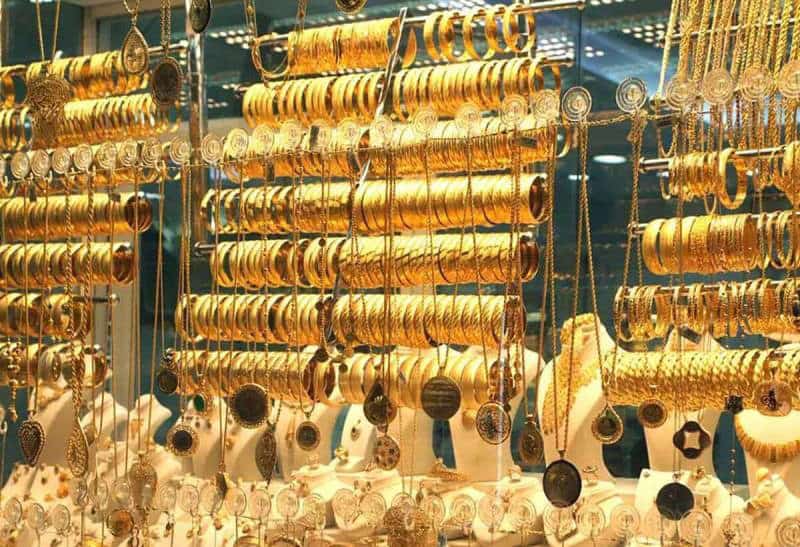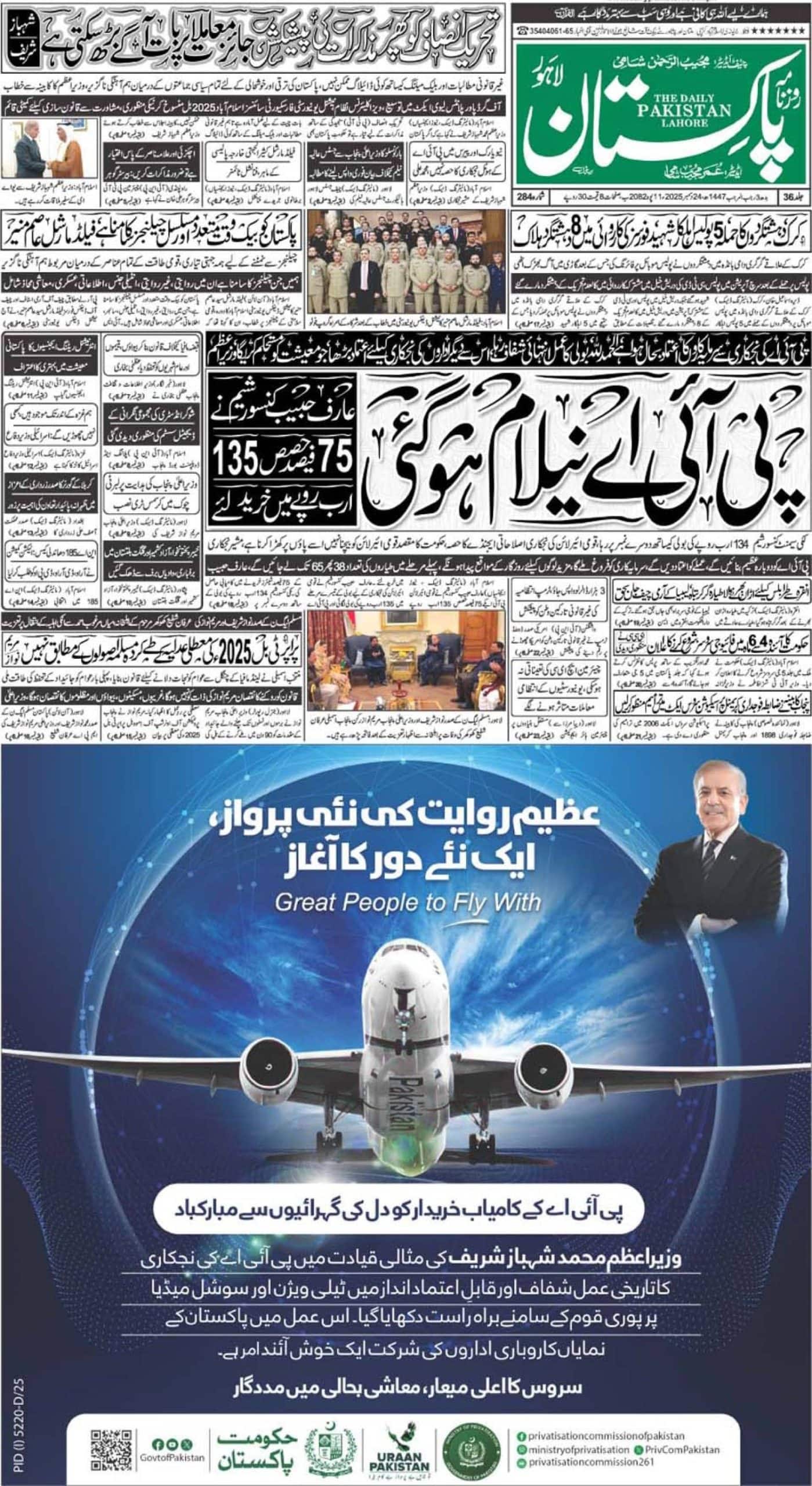“In the three-year period which followed the murder of President Kennedy and Lee Harvey Oswald, 18 material witnesses died: six by gunfire, three in motor accidents, two by suicide, one from a cut throat, one from a karate chop to the neck, three from heart attacks and two from natural causes. An actuary engaged by the London Times calculated the probability that at least 18 witnesses would die of any cause within three years of the JFK assassination as 1 in 100,000 trillion.” Quoted by Jim Marrs
After the CIA had assassinated John F. Kennedy (JFK), in collusion with sections of the Armed Forces, the Secret Service, the Mossad, and the FBI, it went on a killing spree, murdering anyone who it thought was in a position to expose the JFK assassination conspiracy. It killed material witnesses, investigative journalists, and anyone who, on account of circumstances of his or her life, got to know something important about the conspiracy. The extensive killings by the CIA have gone unpunished and the U.S. has succumbed to its terror, and to its lies and brain washing.
In his well-known book “Cross Fire: The Plot That Killed Kennedy”, author Jim Marrs has listed seventy-eight (78) suspicious deaths of people connected in some way with the JFK assassination. Marrs writes: “In the mid-1960s people in Dallas already were whispering about the number of persons who died under strange or questionable circumstances. Well into the 1980s, witnesses and others were hesitant to come forward with information because of stories of strange and sudden death that seemed to visit some people with information about the assassination.” In 2013, the 50th year since Kennedy’s assassination, Richard Belzer and David Wayne published a book “Hit List: An In-depth Investigation into the Mysterious Deaths of Witnesses to JFK Assassination”. In this book the authors dealt with fifty (50) suspicious deaths of individuals connected to the JFK assassination, providing essential details of each case.
The murder of Mary Pinchot Meyer on October 12, 1964, on a towpath by a river in Georgetown at around 12:30 p.m., was an unsolved mystery for decades. But it was only in a 2013 book, “Mary’s Mosaic”, that author Peter Janney, building on the work of author and journalist Leo Damore, was able to establish beyond reasonable doubt, that it was the CIA that was responsible for the murder of Mary Meyer. Peter Janney was the son of a senior CIA officer named Wistar Janney. Mary was a sort of CIA insider. She had been married to Cord Meyer, a senior CIA officer, from 1945-1958, when the two got divorced. Cord Meyer and Wistar Janney were colleagues while Mary Meyer and Peter Janney’s mother, Mary Draper, were class-fellows in school. The two families were, therefore, socially entwined. Mary had three sons, and one of them, Mickey, was the best friend of Peter Janney. But in 1956 Mickey was run over by a car while crossing a busy road. James Jesus Angleton, the evil head of the CIA counter-intelligence wing, was the godfather to all three sons of Cord Meyer, indicating their close ties. Cicely Angleton, the wife of Angleton, was also a very close friend of Mary Meyer.
Before Peter Janney, two authors had investigated the same death, but could not complete the books that they had intended to write. Peter Janney has raised, and also answered, an important question: “Was it just a coincidence that the two attempts to demonstrate a CIA conspiracy in the demise of Mary Meyer would never be published during this period? I don’t think so.” Author Leo Damore, who had almost solved the murder case in 1993, told Peter Janney that forces within the government had ordered Mary Meyer’s “termination”. Damore began suffering from paranoia and depression soon afterwards. It is highly probable that the CIA might have induced such a state in him without his knowledge. In October 1995, Damore shot himself in the presence of a nurse and policeman! The legendary CIA asset Bill Corson once said: “Anybody can commit a murder, but it takes an expert to commit a suicide.” The other author was John Davis. Davis, who had worked on the book, and had been offered an advance of $110,000, by a publisher, was asked by a friend in 1999: “John, what the hell is going on with the book on Mary Pinchot Meyer?” John Davis replied: “Oh, I’m not doing that. I decided I wanted to live ….”
When Peter Janney came home from boarding school for the Thanksgiving holiday in 1964, he was told of the murder. The news numbed Peter who seemed not to absorb what he was being told about the murder. But he did note: “My mother was doing all the talking; my father did not say anything. He just sat there, staring vacantly off into space. There was something almost eerie about his silence.” It is a remarkable observation by a young lad of 17. Peter Janney writes: “As I lay in bed at dawn that Thanksgiving morning in 1964, the apprehension of uneasiness, even dread, engulfed me as something foreboding, something terrible – something I couldn’t possibly know or understand at the time. And that feeling was to haunt me for more than forty years.” It was a very dark and terrible deed, treacherous, mean and heartless. And the boy’s soul was deeply and rightly troubled. His father’s attitude was to be understood later when, eventually, Peter Janney cracked the case of Mary Meyer’s murder.
Mary Meyer had known JFK from her student days and knew that JFK was a philanderer. She was a woman of exquisite beauty and possessed great emotional and intellectual depth. She ended up marrying Cord Meyer, who was a brilliant writer and thinker, and who had a vision of world peace. Cord wished to pursue an academic career, but as fate would have it, he ended up with the CIA. And over a period of time he changed – CIA corrupted his soul. He began subverting the very ideals that had bonded him and Mary together. He, for example, played a key role in the operation known as Mockingbird through which the CIA attempted to, and gained control of, the U.S. media for its own purposes. The CIA was also engaged in mind control experiments through the MKULTRA program. Mary Meyer was aware of these programs and disapproved strongly. Cord became a chain smoker and an alcoholic – he degenerated as a human being. Mary could not accept this change in Cord and sought a divorce.
JFK, known informally as Jack, was a known and compulsive womanizer and was incapable of forming genuine relationships with women. Mary had sensed that “Jack was a broken man. He had lived a life as an instrument of his father’s ambition, not his own.” In the assessment of Peter Janney, himself a psychologist: “Mary’s primary attraction for Jack may have ultimately been trust – in the end, love’s most powerful aphrodisiac. She was independent and self-contained, free of any need for any kind of entrapment or manipulation. Jack respected her as an equal.” James Jesus Angleton later told someone that JFK and Mary were “in love”. He also added “They had something very important.” In an interview with author Damore, JFK’s special assistant Kenny O’Donnell admitted: “Jack confided to Kenny he was deeply in love with Mary, that after he left the White House he envisioned a future with her and would divorce Jackie.” That is how deep the relationship ran.
Peter Janney notes: “Not simply a visitor to the White House residence when Jackie was away, Mary was seen in the Oval Office regularly. She attended any number of policy meetings at which the president discussed sensitive national security business and sought out her consul.” Mary’s close friend Anne Truitt, in whom Mary had confided about her affair with JFK, said: “He saw she was completely trustworthy. He could talk to her with pleasure, without having to watch his words.” Mary was an artist and a very fine painter. Together, they had a vision of world peace and wanted to move to world away from war.
It is important that Mary Meyer was aware of the dirty tactics and skulduggery of the CIA. As Cord Meyer’s wife, she had lived among and interacted with the highest level of CIA officials. She had been close to JFK in 1961 and must have been aware of the problems JFK was having with the CIA and the military. Mary was a guest at a White House dinner arranged by Jackie on October 22, 1962. This was the time when the Cuban missile crisis had erupted – a U2 had detected nuclear missiles on Cuban soil. Similarly, when on September 24, 1963, the U.S. Senate approved the limited test ban treaty, JFK was at the Pinchot family’s Grey Towers estate in Milford, Pennsylvania. The estate – family land and the Pinchot mansion – had been gifted by the Pinchot family to the U.S. Forest Reserve. It was there that news of ratification reached JFK. “According to Kenny O’ Donnell, present that day at the Pinchot estate, Mary and Jack were furtively smiling at one another, the news of the ratification having reached the presidential entourage.” It was as if the two had achieved a milestone toward world peace jointly and quietly.
JFK’s steps toward disarmament, his avoidance of war with Cuba, his refusal to provide US military support to the Bay of Pigs invasion and his civil rights campaign for the blacks had alienated him from the Eastern Establishment and the civil and military security establishment. They had, it appears, finally decided to get rid of him. When JFK was assassinated on November 22, 1963, Mary’s world, and her dreams for a peaceful globe, were shattered. She asked her friend Anne Truitt to spend the night with her. Anne stated later: “She was so sad. I tried to comfort her. We cried, but we didn’t talk much.” About a week later she called Timothy Leary, the LSD expert from Harvard. He wrote in his book “Flashbacks” that he could not fully understand her because she was either drugged, or drunk, or overwhelmed with grief, or all three. She told Leary: “They couldn’t control him anymore. He was changing too fast. They ‘ve covered everything up. I gotta come see you. I’m afraid. Be careful.” So she already knew or suspected that “they” did it and “covered everything up.” She had access to CIA insiders as well as to men in the White House who were close to JFK.
Mary had been saying things to wives of CIA officers that seemed to indicate that she felt that the assassination intrigue was being covered up. As the wife of Cord Meyer she must have been aware of Operation Mockingbird by which the CIA was able to slant news in favor of its own line. She was also aware of dissenting voices like those of lawyer Mark Lane who had begun questioning the official version soon after the assassination. Lane considered Oswald innocent. She had been collecting press cuttings and she had maintained a diary. From a very young age, she was in the habit of writing things up for clarity and catharsis. Her diary held the key – it contained her thoughts on the JFK assassination, and info on her love affair with him.
Most likely she was under observation and on several occasions her house seemed to have been visited while she was out or away. On some occasions her house entry door was found open while she slept upstairs in her bedroom. Her phone was most likely tapped and bugs were installed in her house so that the CIA could keep a tab on her thinking and communications. Also she was being intimidated and harassed by such tactics. The real clinch came when the Warren Commission report was released at the end of September 1964. Mary bought a condensed version of it, read it carefully, and noted down all the disinformation in it. She got so angry that, as was found out from her diary, she met her ex-husband Cord Meyer and Angleton, and told them what she thought of the report. She was dead on October 12, within two weeks. It was believed that on the day she was killed Angleton went to the residence of Mary Meyer with her brother-in-law, the journalist Ben Bradlee, a CIA asset, and managed to get hold of the diary.
Over a period of time, revelations by important CIA officials, investigations by persistent and brave researchers, and a bit of good fortune seem to have enabled the Mary Meyer murder mystery to be solved. There were two crucial developments in this regard. The first fortuitous development occurred in 1980. James Jesus Angleton had been removed from the CIA by its Director William Casey in the year 1974 since he had carried out illegal activities like opening the mail of many U.S. citizens without authorization. In the year 1980 a book on Angleton (“Wilderness of Mirrors” by David Martin) appeared. The book was not very positive about Angleton and was reviewed favorably by Newsweek. To counter this, the disgraced Angleton sought the help of a man named Bernie Yoh who ran a right-wing organization AIM – Accuracy in Media. Yoh published a piece that was favorable to Angleton.
According to Yoh, one day Angleton “flashed out his credentials” and mentioned the murder of JFK’s mistress Mary Pinchot Meyer and her diary which told all about her relationship with JFK. According to Yoh: “Angleton had said, and not without a bit of pride showing ‘I have the diary,’ almost wanting me to ask him to produce it, eager to share the special secrets he had tended with such skill during his glory days of CIA.” Yoh had no idea about Mary Meyer, and when he enquired about her, Angleton said: “That woman that was killed in Georgetown. I took care of everything.” Angleton then produced the diary and gave it to Yoh, apparently also as a return for the favor Yoh had done him. He must have given Yoh a copy, or may have kept the copy for himself. So Angleton himself revealed the existence of the diary, revealed that he had “taken care of everything” and that he possessed it. Angleton died in the year 1987.
Leo Damore either knew Yoh or got to know him. Yoh had no interest in Mary Meyer but Damore was researching her death. It appears that, at some point, Yoh gave the diary (or a copy of it) to Damore. So Damore became aware of the contents of the diary. In her diary Mary had linked the CIA, and in particular Angleton to the JFK assassination. When Mary Meyer was murdered, a poor black man, who happened to be in the area at the time, was framed.
She was shot around 12:30 p.m. while she was taking her routine walk in a park. She was shot twice. The first shot did not kill her and she had struggled with the killer and managed to move away. She had screamed for help and these screams were heard by a “witness”. Then, after having dragged her a good 15-20 feet, so that she could be heard screaming, the killer shot her a second time killing her instantly. Coroner Linwood Rayford noticed that the second shot had been fired with particular precision – it pierced the right lung and severed the aorta. A witness saw a black male of height 5 feet 8 inches to 5 feet 10 inches, of medium build, weighing about 185 pounds walk away from the body, as if permitting the witness to have a good look. “He took his time but he was moving”. The black male was apparently “sent” there so that the “witness” could see him well enough to be able to describe his main features.
Ray Crump, who was eventually hauled up, was a mere 5 feet 3 inches and weighed about 145 lbs. He was completely innocent and happened to be in the area since the morning “fooling around” with his married girlfriend and drinking. He had fallen asleep and she had slipped away. The police report, which was given very reluctantly and after great delay, showed that there was nothing to connect Crump to Mary Meyer forensically. His lawyer, a black woman named Dovey Roundtree, who took up the case free of charge in view of Crump’s extremely poor financial condition, was able to destroy the police “evidence” and managed to secure an acquittal. But the acquittal left the question unanswered: who was the killer?
During the court proceedings an individual named Lieutenant William L. Mitchell turned up as a witness. He stated that he was stationed at the nearby Pentagon, that on his routine jogging in the area, he had crossed Mary Meyer as well as a couple and a single person in shorts. He had also noticed someone like Crump. A couple had been seen by the police but they let the couple go without taking their particulars. Despite a lot of media hype, the couple and the fellow in the shorts disappeared. Roundtree had always been suspicious of Mitchell. She tried to speak to him before the trial but he never answered her phone calls.
Subsequently, when years later, Leo Damore got interested in the case, both he and Roundtree agreed that there was something mysterious about Mitchell. When Damore searched for Mitchell he found that the address that Mitchell had given, had in reality been a CIA safe house. His name was listed at that address till 1968 after which there was no trace of Mitchell – he had left no forwarding address. Damore’s enquiries and searches through the Department of Defense databases did not show any William L. Mitchell who was, as he had claimed, stationed at the Pentagon in 1964! There were no records of Mitchell anywhere. That meant that he was involved in covert activity and therefore would not leave any trace.
In his search for Mitchell, Damore sought the help of the legendary Col. L. Fletcher Prouty. Prouty had a desk at the White House from 1955-1964 and coordinated between the military and the CIA for CIA operations requiring military support. Prouty must have told Damore something about Mitchell, because when, in 1993, Damore sent a letter to Mitchell at his 1964 address it elicited a response. Sometime on the evening of March 30, or early hours of March 31, 1993, Damore’s phone rang. The caller identified himself as William L. Mitchell. He had received Damore’s letter and agreed to talk to him. The two talked for about four hours and Damore recorded the call. Mitchell told Damore that the name was an alias, that Mary’s killing was a CIA operation, that he had been “assigned” the task and that a surveillance team had been monitoring Mary since September. The couple and the guy in shorts, who were never seen again, were part of the surveillance team. He told Damore that the reason Mary was terminated was because she was unwilling to back off in voicing her conclusion that the CIA had killed JFK with the assistance of the Cuban exiles and the Mafia.
The very next morning Damore called his close friend James Smith, a lawyer, and told him that he had solved the Mary Meyer murder case. Smith took notes of whatever Damore told him about the conversation with Mitchell. Photographs of his notes have been given in Peter Janney’s book. Apparently Mitchell was a trained assassin. This was the situation in 1993 and the knowledge was limited to Damore and James Smith. Soon after Damore began suffering from paranoia and depression and committed suicide in 1995. The investigations of Damore were not known to investigative writer Hank Albarelli. In the year 2009 Janney started interacting with Albarelli after reading his book “A Terrible Mistake” in which Albarelli had established that the CIA had murdered its own Frank Olson of MKULTRA program. Janney had been looking for Mitchell and told him that his search for William L. Mitchell ended at his 1964 address: 1500 Arlington Boulevard, in Arlington, Virginia. Astonishingly, Albarelli had lived at that address in his student days! The name seemed to ring a bell in Albarelli’s mind and he told Janney that he would get back to him.
Hank Albarelli had his own contacts in the intelligence community. In the year 2001 Albarelli had been told by a source that William Mitchell was a member of the “Army Special Forces kill teams” that had operated domestically for the CIA and the NSA. Albarelli had taken notes at the time and had pressed his source for further information and had been told that the other aliases used sometimes by Mitchell were “Allen Crawford” and “Walter Morse”. In his notes Albarelli had written that Mitchell was “involved” in the “Mary Meyer case”. He had also noted “Mary murdered on towpath.” Albarelli did not wish to reveal the name of his source. So this was further corroboration of what Damore had found out.
Robert T. Crowley was assistant director covert operations CIA. At some point, he, and his close friend Bill Corson, decided to let the world know about the CIA role in the JFK assassination. Crowley chose an author named Gregory Douglas in whom he decided to confide. In 1996 they began an intense telephone relationship that lasted about three years. Douglas recorded the conversations and transcribed them. Based on what Crowley had told him, James Douglas eventually wrote a book “Regicide” on the JFK assassination. Describing Mary Meyer to Douglas, Crowley said that she and JFK got along very well. “But after Dallas she began to brood and then started to talk. Of course she had no proof but when people like that start to run their mouths, there can be real trouble.”
Crowley also told Douglas that “One of the wives had a talk with Mary about being quiet but Mary was on a tear and that was that.” When Douglas asked “What was the outcome?” Crowley replied “We terminated her of course.” When Douglas asked “Wasn’t it a bit drastic?” the reply was “Why? If you knew the damage she could cause us.” When Douglas asked him if he was the man he said “No, Jim Angleton was. And Ben Bradlee, her brother-in-law was in the know.” He also told Douglas that Jim Angleton and Ben Bradlee were able to get hold of her diary. And he then added: “It wasn’t my decision [to “terminate” Mary Meyer]. I was there but Jim [Angleton] and the others made the final decision. You know how it goes.” Thus Peter Janney, who saw the transcripts, had another independent confirmation that the CIA had Mary Pinchot Meyer killed because she was not willing to keep quiet about the CIA role in the JFK assassination.
Confirmation that Mary Meyer was killed because she would not back off from voicing her conclusion about the CIA role in the JFK assassination came from another source. In the year 1992 former CIA contract operative Robert D. Morrow published his book “First Hand Knowledge”. In this book he narrated an incident involving his Washington CIA boss Marshall Diggs. Diggs told Morrow: “There is a very prominent lady here in Washington who knows too much about the Company [the CIA], its Cuban operations and more specifically about the President’s assassination.” Diggs told Morrow that a lady friend of his as well as of Mary Meyer, had talked to her. “[Mary] Meyer told my friend that she knew positively that [CIA] Agency affiliated Cuban exiles and Mafia were responsible for killing John Kennedy.” Diggs was worried that Robert Kennedy would find out from her and that the counterfeit money operation that involved Morrow would also be exposed. He asked Morrow to let the exiled Cuban leader Mario Kohly know about it. A few days later Morrow met Kohly and then told Diggs that Kohly had said he will take care of Mary Meyer. A week later Mary was killed and that really upset Morrow. Morrow felt very guilty and so kept on pursuing the matter of Mary’s murder. Near the end of his life he told a friend “I don’t think Kohly did it, I think Angleton did it.” It is possible that Diggs already knew of the plan to terminate Mary but deliberately put Morrow on the wrong track and made him think that Kohly had done it.
Finally, Peter Janney nailed the CIA in a manner that left no loop hole. His father Wistar Janney died of a heart attack in 1979. In the year 1980 Cord Myer published his memoirs “Facing Reality”. In the book he mentioned that it was in the afternoon of October 12, 1964, that he received a call from his friend Wistar Janney who told him that Mary had been killed. Now that Wistar Janney was dead Cord could name him. But he forgot that Mary Meyer was not identified until just after 6:00 p.m. that evening. She was identified by her brother-in-law Ben Bradlee. How could Wistar Janney know in the afternoon that Mary Meyer had been killed? The same thing was repeated in the memoirs of Ben Bradlee published in 1995. Bradlee revealed that Wistar Janney had called him “just after lunch” on October 12, 1964 that Mary Meyer had been killed. Thus Bradlee also contradicted his own 1965 trial testimony where he stated that he came to know of her death when she saw her dead body i.e. “sometime after six ‘o’ clock in the evening.”
Janney writes: “How could my father have known anything whatever about Mary Meyer’s death that day, unless, of course he had been involved?” It was on Thanksgiving holiday, when Peter Janney had come home from boarding school, that he had learned of the shattering news of Mary Meyer’s murder. His mother did the talking while his father starred silently in space. “It would take more than forty years to finally realize that it had been his ghostly, eerie silence that evening that had so deeply haunted my psyche.”
It was such a treacherous act. And many of those involved in the planning of that treacherous act were shamelessly and eerily present at her funeral! James Jesus Angleton, Wistar Janney, Cord Meyer, Ben Bradlee, all were there. They were all accessories to the wanton and heartless murder of a beautiful and precious woman who had lived and moved among them. Detective Bernie Crook, who was then only twenty-nine, had remarked that he had seen many dead women “but none who looked beautiful when dead. She even looked beautiful with a bullet in her head.” May her soul rest in peace and may those of her assassins burn in hell.
Tampering with Kennedy’s Brain to Destroy Evidence of a Fatal Frontal Shot

